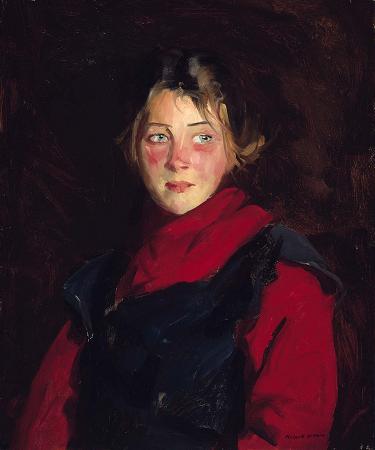Rockwell Kent (1882 - 1971). Rockwell Kent was an American painter, printmaker, illustrator, writer, sailor, adventurer and voyager. Rockwell Kent was born in Tarrytown, New York. Kent was of English descent. He lived much of his early life in and around New York City, where he attended the Horace Mann School. In his mid-40s he moved to an Adirondack farmstead that he called Asgaard where he lived and painted until his death. Kent studied with several influential painters and theorists of his day. He studied composition and design with Arthur Wesley Dow at the Art Students League in the fall of 1900, and he studied painting with William Merritt Chase each of the three summers between 1900 and 1902 at the Shinnecock Hills Summer School of Art, after which he entered in the fall of 1902 Robert Henri's class at the New York School of Art, which Chase had founded. During the summer of 1903 in Dublin, New Hampshire, Kent was apprenticed to painter and naturalist Abbott Handerson Thayer. An undergraduate background in architecture at Columbia University prepared Kent for occasional work in the 1900s and 1910s as an architectural renderer and carpenter. At the Art Students League he met and befriended the artists Wilhelmina Weber Furlong and Thomas Furlong. Kent's early paintings of Mount Monadnock and New Hampshire were first shown at the Society of American Artists in New York in 1904, when Dublin Pond was purchased by Smith College. In 1905 Kent ventured to Monhegan Island, Maine, and found its rugged and primordial beauty a source of inspiration for the next five years. His first series of paintings of Monhegan were shown to wide critical acclaim in 1907 at Clausen Galleries in New York. These works form the foundation of his lasting reputation as an early American modernist, and can be seen in museums across the country, including the Metropolitan Museum of Art, Seattle Art Museum, New Britain Museum of American Art, and the Fine Arts Museums of San Francisco. Among those critics lauding Kent was James Huneker of the Sun, who praised Kent's athletic brushwork and daring color dissonances. In 1910, Kent helped organize the Exhibition of Independent Artists, and in 1911 together with Arthur B. Davies he organized An Independent Exhibition of the Paintings and Drawings of Twelve Men, referred to as The Twelve and Kent's Tent. Painters Marsden Hartley, John Marin, and Max Weber participated in the 1911 exhibition. A transcendentalist and mystic in the tradition of Thoreau and Emerson, whose works he read, Kent found inspiration in the austerity and stark beauty of wilderness. After Monhegan, he lived for extended periods of time in Winona, Minnesota, Newfoundland, Alaska, Vermont, Tierra del Fuego, Ireland, and Greenland. His series of land and seascapes from these often forbidding locales convey the Symbolist spirit evoking the mysteries and cosmic wonders of the natural world. I don't want petty self-expression, Kent wrote, I want the elemental, infinite thing; I want to paint the rhythm of eternity. In the late summer of 1918, Kent and his nine-year-old son ventured to the American frontier of Alaska. Wilderness, the first of Kent's several adventure memoirs, is an edited and illustrated compilation of his letters home. The New Statesman described Wilderness as easily the most remarkable book to come out of America since Leaves of Grass was published. Upon the artist's return to New York in March 1919, publishing scion George Palmer Putnam and others, including Juliana Force, assistant to Gertrude Vanderbilt Whitney, incorporated the artist as Rockwell Kent, Inc. to support him in his new Vermont homestead while he completed his paintings from Alaska for exhibition in 1920 at Knoedler Galleries in New York. Kent's small oil-on-wood-panel sketches from Alaska, uniformly horizontal studies of light and color, were exhibited at Knoedler's as Impressions. Their artistic lineage to the small and spare oil sketches of James Abbott McNeill Whistler, which are often entitled Arrangements, underscores Kent's admiration of Whistler's genius. Approached in 1926 by publisher R. R. Donnelley to produce an illustrated edition of Richard Henry Dana, Jr.'s Two Years Before the Mast, Kent suggested Moby-Dick instead. Published in 1930 by the Lakeside Press of Chicago, the three-volume limited edition filled with Kent's haunting black-and-white pen/brush and ink drawings sold out immediately; Random House also produced a trade edition. Less well known are Kent's talents as a jazz age humorist. As the pen-and-ink draftsman Hogarth, Jr., Kent created dozens of whimsical and irreverent drawings published by Vanity Fair, New York Tribune, Harper's Weekly, and the original Life.
more...














